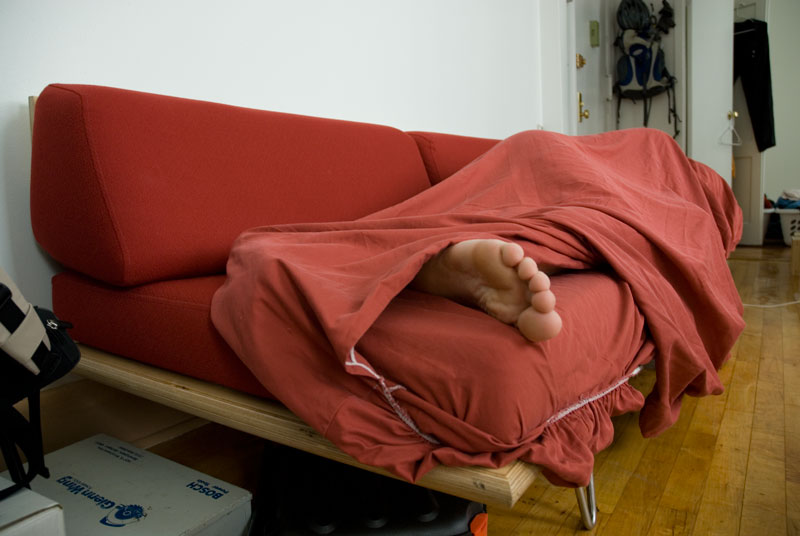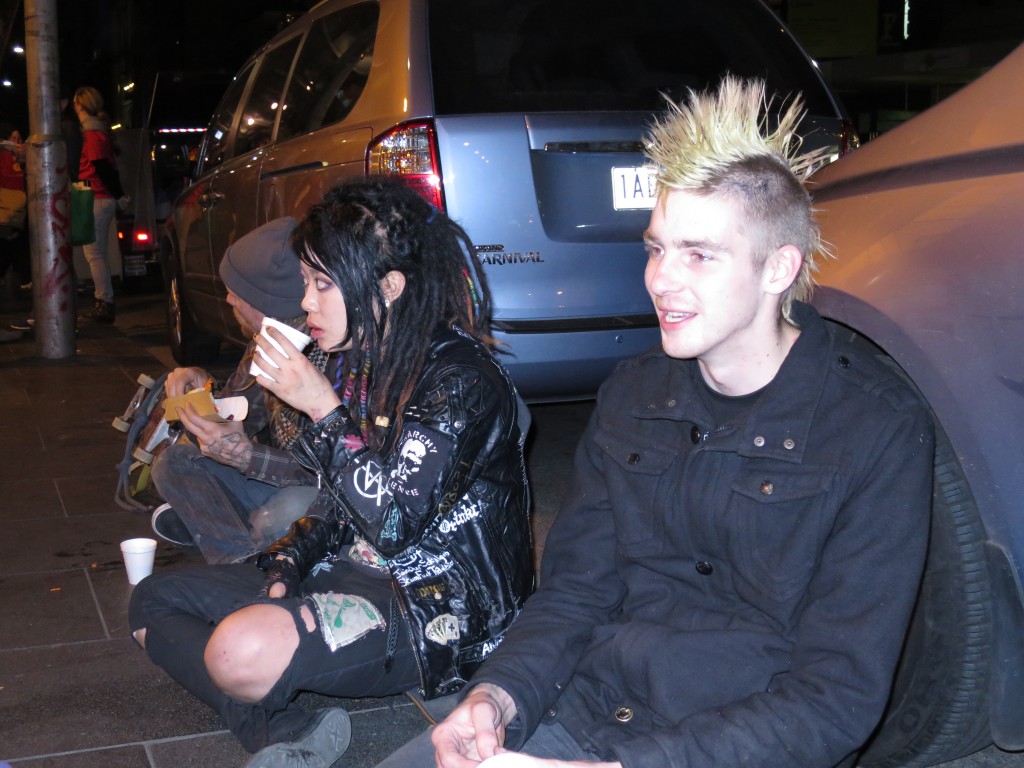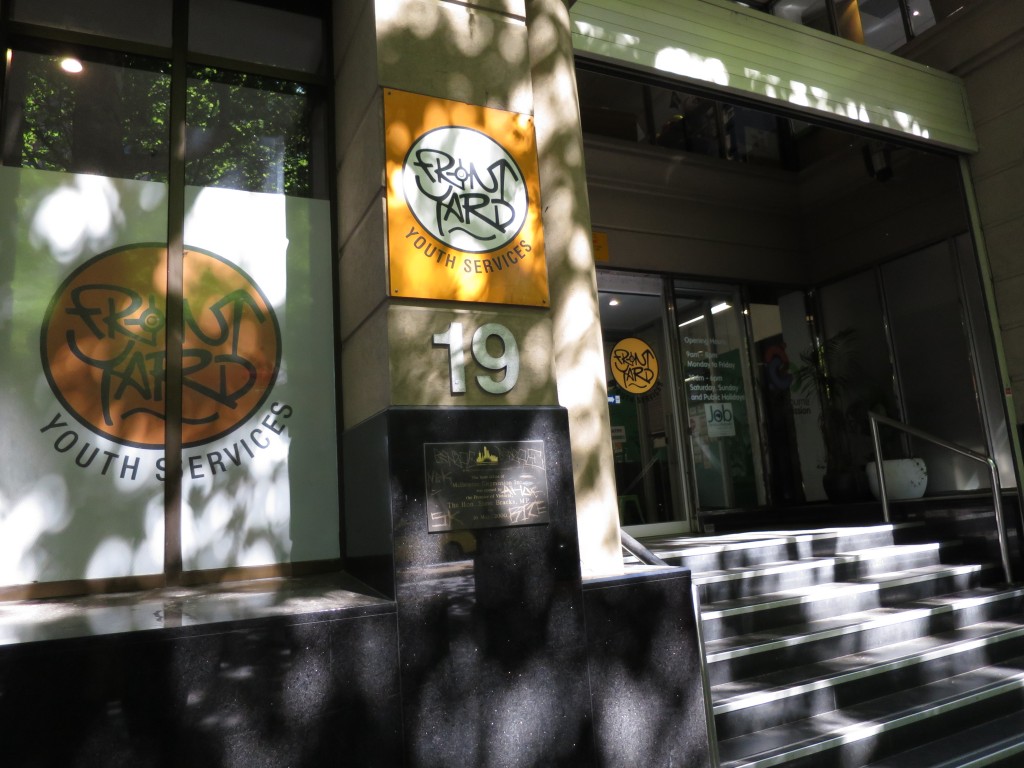Few young couch surfers realise they’re only one step away from the streets

Couch surfing is the hidden form of homelessness
Photo: Michael Mandiberg / Flickr
In the past year, Matthew Kelberg has stayed with more than 20 different friends.
Unable to find work, Matthew, 20, has had to sleep on “random couches” to avoid the streets. Even then, there were times he couldn’t find anywhere to stay.
“I’ve had to sleep in a stairwell because I don’t even know where a squat is.”

At 8.20 on Wednesday night, couch surfer Matthew Kelberg had his first meal for the day.
Photo: Nadia Wu
Matthew left home at 16 and has since been “in and out” of homelessness. His dad was “an angry drunk” and his mother, also an alcoholic, had just started seeing someone else.
“I decided it would be best for everyone if I just sort of left the picture for a bit,” Matthew said.
Matthew has had to couch surf on the goodwill of others to survive.
Matthew’s story was far from unique.
A recent Australian Institute of Health and Welfare report found more than 45,000 young people aged 15 to 24 sought help for homelessness between July 2012 and June 2013. Of these people, 29 per cent were couch surfing or staying in no-tenure housing.
The report said the number of homeless people who couch surfed had jumped by 26 per cent since 2011-12.
RMIT University expert on homelessness Professor Chris Chamberlain said couch surfing was a common “first step” towards homelessness.
“The first place that young people usually go is to a friend or relative’s place,” he said.
“It might last a night, it might last a few days, it might last a week, but it often doesn’t last much longer than that.”

Frontyard Youth Services can help young people (aged 12-25) who are homeless or at risk of homelessness.
Photo: Nadia Wu
Melbourne City Mission spokesman Philip Buckley said this “hidden” form of youth homelessness was a serious problem.
“People who couch surf tend to outstay their welcome so they’ll move amongst friends until the friend wants their mattress back or sofa, or they fall out with the friend because it’s become cramped in their accommodation,” Mr Buckley said.
“They may accept the situation they’re in and not do anything to address the problem.”
Mr Buckley has also had a friend couch surf with him. But it didn’t end well.
The AIHW report said young people mainly sought assistance for homelessness because of a housing crisis, closely followed by family violence and relationship or family breakdown.
Mr Buckley said youth homelessness was a “multifaceted” issue with “no quick fix”.
“It’s about money, it’s about housing, it’s about drugs, it’s about alcohol, it’s about marriage breakdown, it’s about family violence.”





